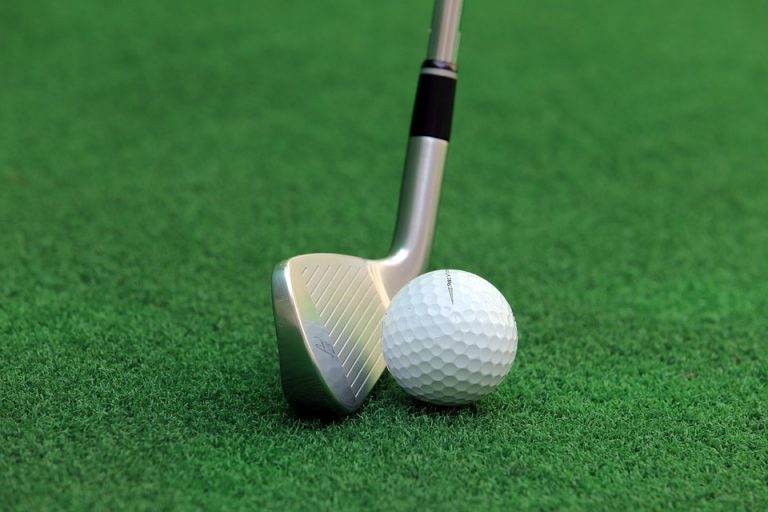General Rules of Strength Athletics
When it comes to strength athletics, understanding the nuances of the regulations can be the difference between success and disqualification. From the intricacies of equipment regulations to the meticulous scoring criteria, each aspect plays a crucial role in determining the outcome of competitions. As you navigate through the world of strength athletics, you will find that adherence to the general rules goes beyond mere formality – it is the foundation upon which your performance will be judged and your progress evaluated.
Equipment Regulations
When participating in strength athletics, it is crucial to adhere to strict equipment regulations to ensure fair competition and safety for all athletes. These regulations are put in place to create a level playing field and minimize the risk of injuries during competitions. Safety guidelines regarding equipment usage are meticulously crafted to protect athletes and maintain the integrity of the sport.
Equipment regulations encompass a wide range of items used in strength athletics, such as weightlifting belts, knee sleeves, wrist wraps, and lifting suits. Each piece of equipment must meet specific criteria regarding dimensions, materials, and usage to be deemed acceptable for competition. For example, weightlifting belts must meet certain thickness and width requirements to provide adequate support to the athlete without giving an unfair advantage.
Safety guidelines play a crucial role in equipment regulations, emphasizing the importance of using gear properly to prevent accidents and injuries. Athletes are encouraged to regularly inspect their equipment for any signs of wear and tear, ensuring that it functions correctly during lifts. Additionally, guidelines often include rules on how equipment should be worn to maximize safety without compromising performance.
Scoring Criteria
What factors determine the scoring in strength athletics competitions? Scoring accuracy and judging consistency play a crucial role in determining the outcome of these competitions. In strength athletics, such as strongman or powerlifting, the scoring criteria are usually straightforward but require precision and consistency from the judges to ensure fairness and accuracy.
Scoring accuracy is essential to rank athletes correctly based on their performance. Judges must assess each competitor's lifts or feats of strength meticulously, following the established guidelines to assign accurate scores. Any discrepancies in scoring can lead to unfair outcomes and affect the overall standings of the competition.
Judging consistency is equally important in strength athletics. Consistent application of the rules and scoring criteria across all athletes ensures a level playing field. Athletes rely on judges to evaluate their performances objectively and consistently to maintain the integrity of the competition.
Athlete preparation and mental focus also contribute significantly to scoring in strength athletics. Athletes must train diligently to meet the physical demands of the competition and mentally prepare themselves to perform at their best. Maintaining focus during each event is crucial for executing techniques correctly and maximizing performance scores.
Performance Standards
As you explore the POINTS in strength athletics, you will gain a comprehensive understanding of the benchmarks that define performance standards. By grasping the strength standards overview, you can identify areas for improvement and set personal goals to elevate your athletic prowess. Achieving these performance benchmarks will not only enhance your physical abilities but also fuel your motivation to push beyond your limits.
Strength Standards Overview
Exploring the Strength Standards Overview provides a comprehensive understanding of performance benchmarks in strength athletics. Strength benchmarks serve as a yardstick for your progress, allowing comparison to others and tracking your own journey. These standards are pivotal in assessing your training progress and setting achievable goals. By measuring your strength against these benchmarks, you gain valuable insights into areas that need improvement and celebrate milestones achieved. Whether you aim to deadlift twice your body weight or master the intricacies of the clean and jerk, strength standards offer a roadmap to success. Embracing these benchmarks not only enhances your performance but also fuels your motivation to push beyond limits and reach new heights in strength athletics.
Achieving Performance Benchmarks
To excel in strength athletics, achieving performance benchmarks is essential for gauging progress and setting ambitious goals. Progress tracking plays a crucial role in determining the effectiveness of your training techniques. By consistently monitoring your performance against established standards, you can identify areas for improvement and tailor your workouts accordingly. Whether you are aiming to increase your one-rep max in the bench press or improve your time in a strength-based challenge, having clear performance benchmarks allows you to measure your advancement accurately. Experimenting with different training techniques can help you surpass plateaus and reach new heights in your strength journey. Embrace the process of tracking your progress and refining your approach to achieve optimal results in your strength endeavors.
Setting Personal Goals
Setting personal goals in strength athletics is the compass that guides your journey towards peak performance and self-improvement. When setting these goals, it's essential to consider various aspects to ensure you are on the right track:
- Mental Preparation: Visualize yourself achieving your goals to enhance motivation and focus.
- Nutrition: Fuel your body with the right nutrients to support your training and recovery.
- Recovery Strategies: Incorporate adequate rest and recovery techniques to prevent burnout and injuries.
- Consistency: Stay committed to your training regimen and goals to make steady progress.
- Adaptability: Be flexible in adjusting your goals based on your performance and circumstances.
Weight Class Requirements
When considering weight class requirements in strength athletics, it's essential to understand the basics of these divisions. You need to appreciate the importance of weight limits in ensuring fair competition and maintaining standards. Additionally, it's crucial to analyze how these requirements impact an athlete's performance and strategic choices.
Weight Class Basics
Within strength athletics, weight class requirements serve as a fundamental aspect determining the competitive categories for athletes. To excel in your chosen weight class, it is crucial to understand the basics:
- Balanced Nutrition: Following proper nutrition guidelines can help you reach and maintain your desired weight class effectively.
- Hydration Importance: Staying adequately hydrated is key to performance and weight management.
- Weight Monitoring: Regularly tracking your weight can ensure you stay within your designated class.
- Strategic Cutting: Knowing when and how to cut weight safely is essential for competition preparation.
- Strength Optimization: Balancing weight management with strength training is vital for peak performance in your weight class.
Importance of Limits
Understanding the weight class limits is essential for athletes to strategically optimize their performance and competitive edge in strength athletics. Setting boundaries by adhering to specific weight categories ensures fair competition and prevents athletes from being disadvantaged due to size discrepancies. By knowing and respecting these limits, athletes can focus on honing their skills and improving their strength within their designated weight class. Pushing limits within these boundaries is a key aspect of strength athletics, as it challenges athletes to maximize their potential without compromising their health or risking disqualification. It also encourages athletes to constantly strive for improvement and push themselves to the edge of their capabilities. Adhering to weight class requirements is not just a rule but a strategic approach to excel in strength competitions.
Performance Impact Consideration
To optimize your performance in strength athletics, it is crucial to consider the impact of weight class requirements on your abilities and competitive edge. When navigating weight class requirements, keep the following points in mind:
- Injury Prevention: Maintaining a weight that allows for proper form and technique can help prevent injuries during training and competitions.
- Training Techniques: Adjusting your training regimen to suit your weight class can enhance your performance and overall strength.
- Balanced Nutrition: Ensure your diet supports your weight goals while providing the necessary nutrients for optimal performance.
- Body Composition: Understanding how your body composition affects your strength and agility within your weight class is essential.
- Performance Evaluation: Regularly assess your performance to gauge how well you are adapting to your weight class requirements.
Judging Criteria
When evaluating performances in strength athletics, judges consider a combination of factors to determine the overall quality and adherence to the rules of the competition. Judging accuracy is paramount in ensuring fair outcomes for all competitors. Judges must apply consistent scoring criteria across all participants to uphold the integrity of the sport. Consistency in scoring is essential to provide a level playing field and prevent any biases from influencing the results.
In strength athletics, judges assess various elements during a performance. They focus on the execution of each movement, looking for proper form and technique. Additionally, judges consider factors such as speed, control, and completion of the required tasks within the designated parameters. An accurate judgment requires a keen eye for detail and a deep understanding of the sport's regulations.
To maintain fairness and transparency, judges undergo rigorous training to enhance their skills in evaluating performances. They must possess a comprehensive knowledge of the rules and be able to make split-second decisions during live competitions. Consistency in scoring ensures that athletes are judged fairly and that the results reflect their true abilities.
Ultimately, the judging criteria in strength athletics serve as a guiding principle to uphold the standards of the sport and provide a fair platform for athletes to showcase their strength and skills.
Time Limitations
As a strength athlete, navigating time limitations within competitions can significantly impact your performance and overall results. When it comes to managing time effectively in strength athletics, there are several key factors to consider:
- Training Approaches: Utilize time efficiently during training sessions by focusing on compound movements that target multiple muscle groups simultaneously. Incorporating supersets or circuit training can help maximize your workout in limited time.
- Competition Strategies: Develop a game plan for each event that allows you to perform at your best within the given time frame. Prioritize tasks during competitions to ensure you complete the required lifts or challenges on time.
- Recovery Techniques: Make the most of your post-competition recovery time by incorporating stretching, foam rolling, and active recovery methods. Adequate rest and recovery are crucial for maintaining strength and preventing injuries.
- Nutrition Guidelines: Plan your meals and snacks strategically to fuel your body for optimal performance within the time constraints of competitions. Focus on consuming a balance of macronutrients to support energy levels and muscle recovery.
Time limitations in strength athletics require a thoughtful approach that integrates efficient training methods, strategic competition planning, effective recovery techniques, and proper nutrition guidelines. By mastering time management in these areas, you can enhance your performance and achieve your athletic goals effectively.
Prohibited Substances
Navigating the realm of strength athletics necessitates a vigilant stance against the use of prohibited substances to maintain fairness and uphold the integrity of the sport. Drug testing plays a crucial role in ensuring fair competition among athletes. Athletes are expected to adhere to strict guidelines regarding prohibited substances to compete on a level playing field. Here's a table outlining some common prohibited substances in strength athletics:
| Substance | Description | Consequences |
|---|---|---|
| Anabolic Steroids | Enhance muscle growth and strength | Disqualification |
| Stimulants | Increase alertness and energy | Suspension |
| Human Growth Hormone | Enhance muscle recovery | Ban from competition |
| Diuretics | Aid in weight cutting | Fine |
| Beta-Blockers | Reduce performance anxiety | Warning |
Athletes found using these substances can face severe penalties, including disqualification, suspension, or even a ban from future competitions. Drug testing is conducted regularly to deter athletes from resorting to prohibited substances. By upholding strict regulations and conducting thorough drug testing, strength athletics can maintain the spirit of fair competition and ensure that victories are achieved through dedication, hard work, and natural talent.
Safety Protocols
To ensure the well-being of athletes and maintain a secure environment, adherence to stringent safety protocols is imperative in the realm of strength athletics. Proper warm-up routines play a crucial role in injury prevention and overall performance enhancement. Here are some key safety protocols that should be followed:
- Proper Warm-Up: Engaging in a thorough warm-up routine is essential to prepare your muscles, joints, and mind for the intensity of strength athletics. This helps prevent injuries and ensures optimal performance.
- Equipment Inspection: Before starting any strength activity, it is vital to inspect all equipment thoroughly. Check for any signs of wear and tear to avoid accidents during training or competitions.
- Qualified Supervision: Always ensure that a qualified coach or supervisor is present during strength training sessions. They can provide guidance on proper form, technique, and safety precautions.
- Hydration and Nutrition: Staying hydrated and maintaining proper nutrition are key components of safety in strength athletics. Dehydration and poor nutrition can lead to fatigue, cramps, and decreased performance.
- Listen to Your Body: Pay close attention to your body's signals during training. If you experience pain, discomfort, or unusual fatigue, take a break and consult a healthcare professional if needed.
Frequently Asked Questions
Can Athletes Use Chalk or Other Grip Aids During Competitions?
In competitions, athletes can usually use chalk or grip aids to enhance their grip strength. Using these tools is common practice and shows good sportsmanship. It's essential to follow etiquette and respect the rules.
Are Athletes Allowed to Wear Lifting Belts or Other Supportive Gear During Events?
Yes, athletes can wear lifting belts or supportive gear during events. These equipment guidelines aim to ensure safety and prevent injuries. However, there are concerns about performance enhancement and fairness, which need to be considered.
Are There Any Specific Rules Regarding the Use of Headphones or Music During Competitions?
During competitions, using headphones or music is generally allowed to help with music preferences and mental focus. However, be mindful of distractions to ensure peak performance. Consider the performance benefits of music while maintaining focus on your goals.
Are Athletes Required to Pass Any Specific Medical Tests or Certifications in Order to Compete?
To compete, you must meet specific medical certifications. Grip aids, lifting gear, and competition attire adhere to regulations. Restrictions on music exist. Proper footwear is essential. Follow guidelines for a fair playing field.
Are There Any Restrictions on the Type of Clothing or Footwear That Athletes Can Wear During Events?
When you hit the arena, dress for success! Your footwear must be on point, following specific requirements. Clothing choice? Stick to the regulations. Grip aids are allowed, but equipment restrictions may apply. Stay stylish, stay strong!






